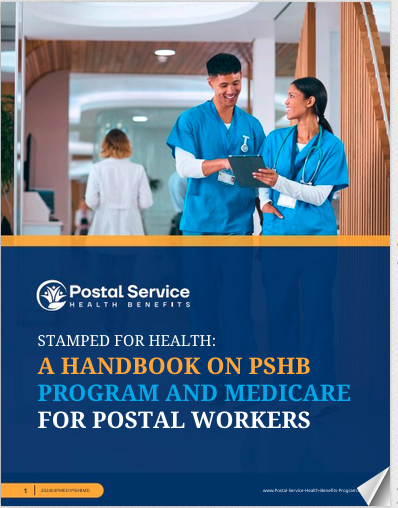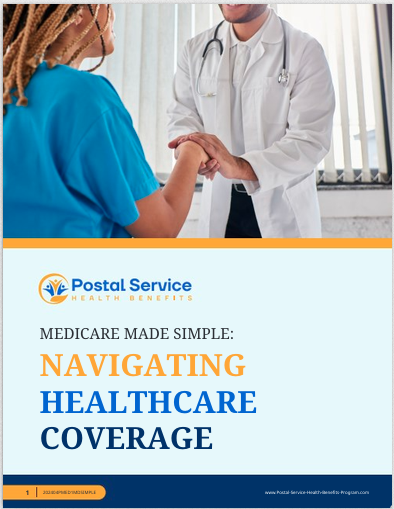Key Takeaways
-
Familiarize yourself with the Postal Service Health Benefits (PSHB) enrollment process, deadlines, and plan options to ensure seamless coverage in 2025.
-
Take advantage of Open Season to compare plans, understand Medicare integration, and secure the best coverage for your needs.
Why PSHB Enrollment Matters
If you’re a Postal Service employee, annuitant, or an eligible family member, transitioning to the PSHB program is a big deal this year. With changes in health coverage taking effect in 2025, preparing for enrollment ensures you avoid gaps in coverage and get the most out of your health benefits.
PSHB replaces the Federal Employees Health Benefits (FEHB) program for most postal workers and retirees. While it shares similarities with FEHB, there are some key differences—particularly in how it integrates with Medicare. Understanding these nuances is essential to making informed decisions.
Know Your Enrollment Timeline
The 2025 PSHB enrollment period began with the Open Season held from November 11 to December 13, 2024. If you didn’t enroll during this time, you may need to wait for the next Open Season or a qualifying life event (QLE) to make changes to your plan.
Key Dates to Remember:
-
January 1, 2025: PSHB coverage officially begins.
-
Ongoing: Enrollments outside Open Season are only allowed for specific QLEs, like marriage, birth, or loss of other health coverage.
It’s vital to mark these dates and review your current coverage status.
Understand Your Coverage Options
PSHB offers a variety of plans tailored to postal workers and retirees. Plans include Self Only, Self Plus One, and Self and Family options, each with varying premiums, deductibles, and benefits. These plans differ in terms of:
-
Coinsurance and Copayments: Depending on the plan, you might pay a percentage of service costs (coinsurance) or fixed fees (copayments) for doctor visits, hospital stays, and prescriptions.
-
Deductibles: Some plans feature low deductibles for in-network care, while others may have higher amounts if you’re seeking flexibility with out-of-network providers.
-
Prescription Drug Benefits: Medicare-eligible retirees will automatically receive prescription drug coverage through a Medicare Part D Employer Group Waiver Plan (EGWP).
Don’t Overlook Medicare Integration
If you or your family members are eligible for Medicare, integrating it with PSHB can maximize your benefits and reduce out-of-pocket costs. Medicare Part B enrollment is mandatory for most postal retirees who are eligible for Medicare. Exceptions apply to those who retired on or before January 1, 2025, and a few other categories.
Why Enroll in Part B?
-
Lower Costs: PSHB plans typically waive or reduce deductibles and coinsurance for members enrolled in Medicare Part B.
-
Enhanced Benefits: Many plans offer reimbursement for Part B premiums or additional cost-sharing reductions.
If you’re not yet enrolled in Medicare, you can sign up during the Initial Enrollment Period (IEP) around your 65th birthday or a Special Enrollment Period (SEP) if you qualify. For those already in Medicare, coordinating coverage with PSHB ensures you’re fully protected.
Reviewing Your Plan Options
Open Season is the perfect time to evaluate your healthcare needs and compare plans. Here’s how to approach the selection process:
-
Assess Your Needs: Consider your medical history, anticipated healthcare needs, and the size of your household.
-
Compare Costs: Look beyond premiums to assess deductibles, copayments, coinsurance, and out-of-pocket limits.
-
Examine Networks: Ensure your preferred doctors and hospitals are included in the plan’s network.
-
Review Benefits: Check for extra benefits like dental, vision, and hearing coverage.
The PSHB plans provide detailed brochures to help you make informed decisions. Take your time reviewing these materials to avoid surprises later.
Handling Special Enrollment Scenarios
Certain life changes, called Qualifying Life Events (QLEs), allow you to update your PSHB enrollment outside of Open Season. Examples include:
-
Marriage or divorce
-
Birth or adoption of a child
-
Loss of other health insurance coverage
If you experience a QLE, you typically have 30 to 60 days to update your enrollment. Missing this window could leave you without adequate coverage until the next Open Season.
How to Enroll
Enrollment is straightforward but requires attention to detail. Follow these steps to ensure success:
-
Log In to Your Account: Use the PostalEASE system or the PSHB portal to review your options and make your selection.
-
Gather Required Information: Have your Employee Identification Number (EIN) and PIN ready.
-
Submit Your Choice: Confirm your plan selection and save your confirmation number for reference.
For retirees, enrollment might be handled through the Office of Personnel Management (OPM). Check your specific requirements to avoid delays.
Avoid Common Pitfalls
Preparing for PSHB enrollment means avoiding common mistakes that could cost you time and money. Here are a few to watch out for:
-
Missing Deadlines: Late enrollment could leave you without coverage or limited options.
-
Ignoring Medicare Requirements: Failing to enroll in Part B, if required, could result in higher costs.
-
Overlooking Plan Changes: Annual adjustments in premiums, deductibles, and benefits might affect your budget or coverage.
By staying proactive and informed, you can sidestep these issues.
Tips for Retirees
If you’re retired or nearing retirement, PSHB introduces several considerations:
-
Medicare Coordination: Ensure your PSHB and Medicare plans complement each other to avoid duplicate coverage or missed opportunities for savings.
-
Financial Planning: Factor in costs like premiums, deductibles, and copayments when budgeting for healthcare expenses.
-
Stay Updated: Keep an eye on annual plan changes to make necessary adjustments during Open Season.
Retirees also have the option to consult with OPM for specific guidance on PSHB enrollment.
What Happens If You Don’t Enroll?
Failing to enroll in a PSHB plan during Open Season could leave you without health coverage. While there are exceptions for certain QLEs, it’s best to act during the enrollment window to avoid complications. If you miss this year’s deadlines, mark your calendar for the next Open Season.
Wrapping Up: Staying Ready for 2025
Preparing for PSHB enrollment in 2025 doesn’t have to be stressful. With a little planning and attention to deadlines, you can ensure smooth coverage and make the most of your benefits. Whether you’re an active employee or a retiree, understanding your options and acting early will pay off in the long run.







